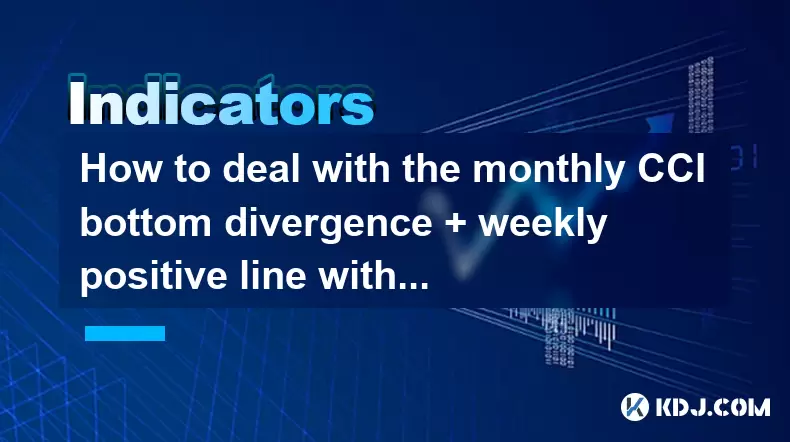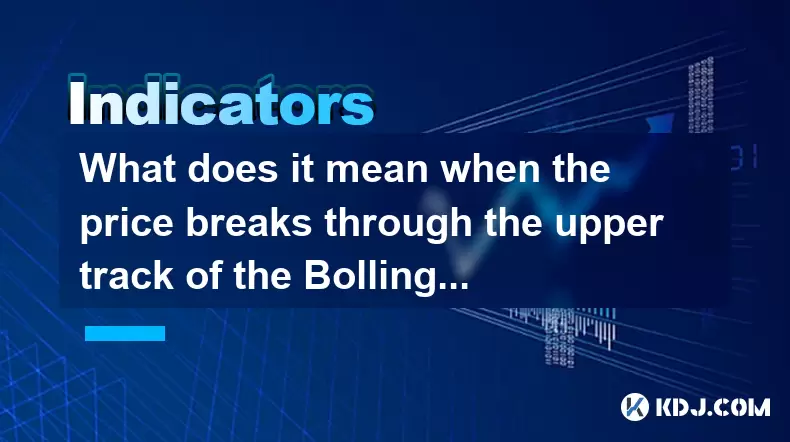-
 Bitcoin
Bitcoin $117500
-0.66% -
 Ethereum
Ethereum $3760
-1.24% -
 XRP
XRP $3.087
-2.54% -
 Tether USDt
Tether USDt $0.9999
-0.01% -
 BNB
BNB $803.6
-4.03% -
 Solana
Solana $180.3
-4.15% -
 USDC
USDC $0.9998
-0.01% -
 Dogecoin
Dogecoin $0.2218
-4.92% -
 TRON
TRON $0.3366
3.71% -
 Cardano
Cardano $0.7785
-3.73% -
 Hyperliquid
Hyperliquid $42.90
-4.75% -
 Sui
Sui $3.797
-7.45% -
 Stellar
Stellar $0.4165
-2.32% -
 Chainlink
Chainlink $17.65
-4.17% -
 Bitcoin Cash
Bitcoin Cash $561.0
-3.86% -
 Hedera
Hedera $0.2611
-4.54% -
 Avalanche
Avalanche $24.33
-7.02% -
 UNUS SED LEO
UNUS SED LEO $8.972
0.06% -
 Litecoin
Litecoin $107.6
-2.79% -
 Toncoin
Toncoin $3.254
-1.84% -
 Shiba Inu
Shiba Inu $0.00001306
-4.69% -
 Ethena USDe
Ethena USDe $1.001
0.00% -
 Uniswap
Uniswap $10.10
-4.83% -
 Polkadot
Polkadot $3.902
-4.63% -
 Monero
Monero $315.1
-2.57% -
 Dai
Dai $1.000
0.02% -
 Bitget Token
Bitget Token $4.499
-2.53% -
 Pepe
Pepe $0.00001145
-7.38% -
 Cronos
Cronos $0.1479
6.07% -
 Aave
Aave $281.3
-4.07%
How to deal with the monthly CCI bottom divergence + weekly positive line with large volume + daily line breaking through the annual line?
A monthly CCI bottom divergence, weekly bullish candle on high volume, and daily breakout above the 200-day MA signal a high-probability bullish reversal in crypto markets.
Jul 29, 2025 at 03:49 am

Understanding the Monthly CCI Bottom Divergence
The Commodity Channel Index (CCI) is a momentum-based oscillator used to identify overbought and oversold conditions in the market. A bottom divergence on the monthly CCI chart occurs when the price of a cryptocurrency makes a new low, but the CCI fails to reach a new low and instead forms a higher low. This signals weakening downward momentum and a potential reversal. For traders focusing on long-term trends, spotting this divergence is crucial because it often precedes major bullish reversals.
To identify a monthly CCI bottom divergence:
- Confirm that the price has made a lower low compared to a previous bottom.
- Observe that the CCI indicator forms a higher low during the same period.
- Ensure the divergence appears on the monthly timeframe to validate its significance.
- Use a CCI period of 14, which is standard, unless backtesting suggests another setting.
This divergence suggests that despite bearish price action, selling pressure is diminishing. It becomes more reliable when combined with other confirming signals across different timeframes.
Analyzing the Weekly Positive Line with Large Volume
A positive line on the weekly chart refers to a candlestick that closes higher than it opened, indicating bullish sentiment over the week. When this occurs with large trading volume, it signals strong institutional or retail participation and confirms that buying pressure is overcoming selling pressure. In the context of a potential reversal, this combination is a strong confirmation signal.
To verify a weekly positive line with large volume:
- Check that the weekly candle is green (bullish) and has a substantial body.
- Compare the volume of the current week to the average volume of the past 10–20 weeks.
- Confirm that volume is at least 1.5 times higher than the average to qualify as "large."
- Ensure the price action breaks above key resistance or closes near the high of the weekly range.
Large volume on a weekly bullish candle reduces the likelihood of a false breakout. It shows conviction behind the move and increases the probability that the trend may shift from bearish to bullish. This signal gains more weight when it follows a period of consolidation or downtrend.
Daily Price Breaking Through the Annual Line
The annual line, typically represented by the 200-day moving average (MA), is one of the most widely watched long-term trend indicators in cryptocurrency trading. When the daily price breaks above this line with conviction, it often marks the beginning of a new bull phase. This breakout becomes especially significant when it occurs after a prolonged bear market.
To confirm a valid breakout of the annual line:
- Ensure the daily closing price is above the 200-day MA for at least two consecutive days.
- Look for the 200-day MA to begin flattening or turning upward, indicating potential trend change.
- Confirm the breakout with rising volume on the days of the break.
- Avoid acting on wicks or intraday spikes that close back below the MA.
A sustained move above the 200-day MA suggests that long-term sentiment is shifting. Traders often use this as a signal to enter long positions or increase exposure, especially when supported by other technical indicators.
Integrating the Three Signals for Trade Entry
When monthly CCI bottom divergence, weekly bullish candle with high volume, and daily breakout above the 200-day MA align, the confluence creates a high-probability setup. This multi-timeframe alignment filters out noise and increases confidence in the trade.
To execute a trade based on this confluence:
- Wait for all three conditions to be fully confirmed before taking action.
- Enter a long position after the daily close above the 200-day MA, preferably on the second day of confirmation.
- Set a stop-loss just below the recent swing low or below the 200-day MA to manage risk.
- Use a position sizing strategy that limits risk to 1–2% of total capital per trade.
- Consider scaling in if the price retests the 200-day MA as support after the breakout.
Avoid entering on speculation. Each signal must be clearly visible and confirmed on the respective chart. Use charting platforms like TradingView to overlay the CCI, volume, and moving averages for clarity.
Monitoring Post-Entry Price Action and Risk Management
After entering a trade based on this setup, continuous monitoring is essential. The initial breakout may face pullbacks or retests. Proper risk management ensures survival even if the market fluctuates.
Key actions after entry:
- Watch for the price to hold above the 200-day MA during pullbacks.
- Monitor weekly volume to ensure it remains elevated, indicating sustained interest.
- Check that the monthly CCI does not re-enter oversold territory prematurely.
- Adjust stop-loss upward as the price advances to lock in profits.
- Avoid emotional decisions during volatility; stick to the predefined plan.
Use trailing stops or partial profit-taking at predetermined targets. Never move the stop-loss downward once it's raised. The goal is to protect capital while allowing the trade room to develop.
Common Questions About This Trading Strategy
Q: Can this strategy be applied to all cryptocurrencies?
Yes, this strategy can be applied to any cryptocurrency with sufficient historical data and trading volume. However, it works best on major coins like BTC, ETH, and BNB due to their liquidity and clearer technical patterns. Low-cap altcoins may exhibit erratic behavior that invalidates the signals.
Q: What if the daily price breaks above the 200-day MA but volume is low?
A breakout on low volume is considered weak and may result in a false signal. In such cases, it's advisable to wait for a retest with higher volume confirmation before entering. A lack of volume suggests lack of market conviction.
Q: How long should I hold the position after entry?
There is no fixed duration. The position should be held as long as the 200-day MA remains supportive and the broader trend stays intact. Exit signals include a monthly CCI forming a top divergence or a weekly close below the 200-day MA.
Q: Can I use leverage when trading this setup?
Leverage can amplify gains but also increases risk. Given the long-term nature of the signals, low to moderate leverage (2x–5x) may be acceptable for experienced traders. Beginners should avoid leverage until they have tested the strategy in a demo environment.
Disclaimer:info@kdj.com
The information provided is not trading advice. kdj.com does not assume any responsibility for any investments made based on the information provided in this article. Cryptocurrencies are highly volatile and it is highly recommended that you invest with caution after thorough research!
If you believe that the content used on this website infringes your copyright, please contact us immediately (info@kdj.com) and we will delete it promptly.
- Bitcoin Price Drop: Navigating the Dip with Corporate Strategies
- 2025-07-30 07:30:12
- BNB's Bullish Cycle: ChatGPT Weighs In on the Future
- 2025-07-30 06:50:12
- XRP's Wild Ride: Open Interest, Price Crash Fears, and What's Next
- 2025-07-30 07:50:12
- SEC Greenlights In-Kind Creations: A Game Changer for Bitcoin ETPs?
- 2025-07-30 07:50:12
- Arbitrum (ARB) Price Prediction: Navigating the Ups and Downs of the Best ETH Eco
- 2025-07-30 06:50:12
- Ethereum, Ruvi AI, Presale: The Next Big Thing in Crypto?
- 2025-07-30 07:30:12
Related knowledge

What does it mean when the EMA combination crosses upward for the first time after sideways trading?
Jul 28,2025 at 03:43pm
Understanding the EMA and Its Role in Technical AnalysisThe Exponential Moving Average (EMA) is a widely used technical indicator in cryptocurrency tr...

What does it mean when the price breaks through the upper track of the Bollinger Band but the RSI is overbought?
Jul 30,2025 at 03:35am
Understanding Bollinger Bands and Their Upper TrackBollinger Bands are a widely used technical analysis tool developed by John Bollinger. They consist...

What signal does the ROC send when it rises rapidly from a low level and breaks through the zero axis?
Jul 27,2025 at 10:15am
Understanding the Rate of Change (ROC) IndicatorThe Rate of Change (ROC) is a momentum-based oscillator used in technical analysis to measure the perc...

What does it mean when the moving averages are glued together and a gap appears?
Jul 29,2025 at 07:49pm
Understanding Moving Averages in Cryptocurrency TradingMoving averages are among the most widely used technical indicators in the cryptocurrency tradi...

What does it mean when TEMA breaks through the long-term downward trend line?
Jul 29,2025 at 02:50pm
Understanding the Role of Smart Contracts in Decentralized Finance (DeFi)Smart contracts are self-executing agreements with the terms of the agreement...

What does it mean when the price breaks through the double bottom neckline and the moving averages are arranged in a bullish pattern?
Jul 28,2025 at 10:57am
Understanding the Double Bottom PatternThe double bottom is a widely recognized reversal chart pattern in technical analysis, particularly within the ...

What does it mean when the EMA combination crosses upward for the first time after sideways trading?
Jul 28,2025 at 03:43pm
Understanding the EMA and Its Role in Technical AnalysisThe Exponential Moving Average (EMA) is a widely used technical indicator in cryptocurrency tr...

What does it mean when the price breaks through the upper track of the Bollinger Band but the RSI is overbought?
Jul 30,2025 at 03:35am
Understanding Bollinger Bands and Their Upper TrackBollinger Bands are a widely used technical analysis tool developed by John Bollinger. They consist...

What signal does the ROC send when it rises rapidly from a low level and breaks through the zero axis?
Jul 27,2025 at 10:15am
Understanding the Rate of Change (ROC) IndicatorThe Rate of Change (ROC) is a momentum-based oscillator used in technical analysis to measure the perc...

What does it mean when the moving averages are glued together and a gap appears?
Jul 29,2025 at 07:49pm
Understanding Moving Averages in Cryptocurrency TradingMoving averages are among the most widely used technical indicators in the cryptocurrency tradi...

What does it mean when TEMA breaks through the long-term downward trend line?
Jul 29,2025 at 02:50pm
Understanding the Role of Smart Contracts in Decentralized Finance (DeFi)Smart contracts are self-executing agreements with the terms of the agreement...

What does it mean when the price breaks through the double bottom neckline and the moving averages are arranged in a bullish pattern?
Jul 28,2025 at 10:57am
Understanding the Double Bottom PatternThe double bottom is a widely recognized reversal chart pattern in technical analysis, particularly within the ...
See all articles

























































































